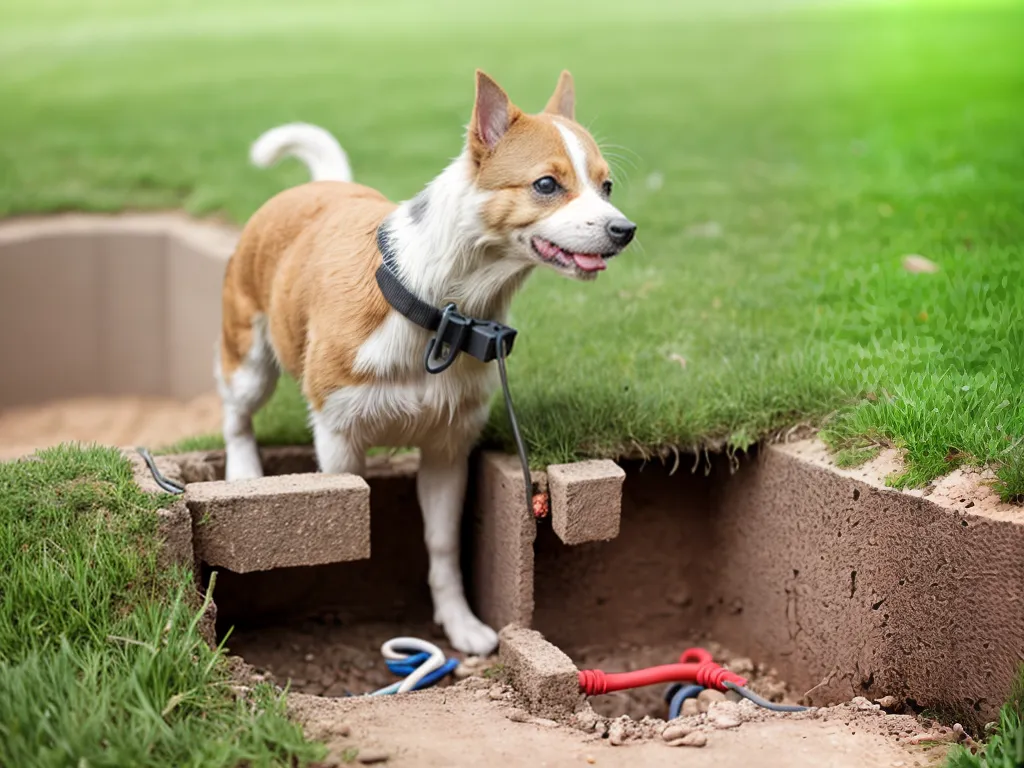
Installing an underground electric fence can help keep your pets safe in your yard. This type of fencing uses a wire buried underground along with a collar receiver to deliver a small static correction when your pet approaches the boundary. With proper training, an underground fence can work very well to contain pets. However, there are some important considerations when installing and using an electric fence to ensure it is effective and humane.
Selecting the Right Underground Fence System
There are several factors to evaluate when choosing an underground fence system:
-
Size of area to contain - Measure the boundary where you want to install the fence. Make sure to choose a system that can cover the desired area. Most systems can cover 1-5 acres.
-
Number of pets - If you have multiple pets, opt for a system that supports multiple collars. This allows customizing correction levels for each pet.
-
Ease of installation - Look for systems with simpler wire burial rather than having to dig trenches. DIY systems should have clear installation instructions.
-
Collar fit and features - Get the right collar size for your pet and consider useful features like waterproof collars and rechargeable batteries.
-
Training modes - Look for multiple correction levels and a tone/vibration mode for training. This allows adjusting the stimulation.
-
Surge protection - Choose a system with lightning protection to avoid power surges damaging the wiring.
-
Warranty - Check warranties carefully to ensure the system components are covered for an adequate time frame.
I personally chose the Havahart Radial-Shape Select system for my yard. It was easy to install, fit my dog's neck perfectly, and had great training features.
Planning the Layout
Properly planning where to place the boundary wire is crucial for containing your pet. Here are some tips:
-
Map out boundary areas avoiding any hazards like pools, gardens, or busy streets.
-
Layout wire in a circular pattern for best consistency. Avoid sharp angles.
-
The wire should be set back at least 10 feet from places you want to keep pets out of.
-
If there are areas pets need to access like sidewalks, make wire loops around them to create an uncorrected zone.
-
For multi-pet households, keep boundary wires ~6 feet apart so their signals don't overlap.
I mapped my yard and laid out the wire in an oval pattern enclosing my lawn and garden while excluding the pool and front sidewalk. This provided good coverage and avoided any dangerous areas.
Installing the Boundary Wire
Burying the boundary wire properly is very important for system effectiveness:
-
For DIY systems, use a trenching shovel or lawn edger to cut a 1-3 inch trench.
-
Unroll the boundary wire keeping it secure in the trench with lawn staples every 5 feet or so.
-
Avoid making sharp bends in the wire as this can reduce the signal strength. Keep nice smooth runs.
-
Splice any wire junctions correctly with waterproof splices. This maintains the circuit signal.
-
After laying the full loop, connect the ends to the transmitter and verify there are no breaks before burying.
-
Bury the wire fully and avoid leaving any segments exposed which could damage it.
I trenched the full loop 1 inch deep taking care not to kink the wire. I used a ton of staples to keep everything in place. Once connected, I tested the loop and got the green light before backfilling the trench.
Collar Setup and Pet Training
The right approach to collar fitting, settings, and training is key for having an effective fence:
-
Make sure collar probes touch the dog's skin but don't make the collar overly tight.
-
Start with a low stimulation level and use higher vibrate/tone modes at first.
-
Gradually increase static correction intensity if needed but avoid excessive levels.
-
Train for 2 weeks with boundary flags to establish the new area before relying solely on the collar.
-
Closely supervise your pet during initial weeks and intervene to reinforce training until they are conditioned.
-
Test the collar periodically with your own hand to experience the stimulation level being applied.
For my Labrador, I fitted the collar properly and kept it on the lowest setting at first. I spent a lot of time walking him by the boundary with flags and praising good behavior over 2 weeks. Now he rarely tests the boundary but if he does, the tone gets him back on track.
Troubleshooting Common Issues
Despite best efforts, you may encounter some problems getting your system to work right:
-
If the collar is not beeping at the boundary, check for wire breaks and that the collar battery is charged.
-
For false beeping indoors, adjust the boundary width control and collar sensitivity settings.
-
If the pet is running through the boundary, make sure collar probes are contacting skin and increase stimulation level if needed.
-
For intermittent fence failures, look for damaged insulation exposing wire which can short the signal.
-
Use a boundary wire tester tool to verify wire continuity and isolate signal drops or shorts along the loop.
-
Contact the manufacturer if you are unable to resolve fence malfunctions and need replacement components.
I originally had false alarms in my house with the base settings. Reducing the boundary width eliminated this. I also used the wire tester to find a spot where the insulation was damaged, causing signal loss.
Conclusion
Installing an underground fence for your pets takes planning and care but can be a very effective containment solution when done properly. The most important aspects are laying a good boundary wire loop, fitting the collar correctly, and taking time to properly train your pets on the system. With patience and consistency, an underground fence can provide both freedom for your pets while keeping them safely in the yard. Just be sure to check the system regularly and monitor your pets until fully conditioned to the boundaries.